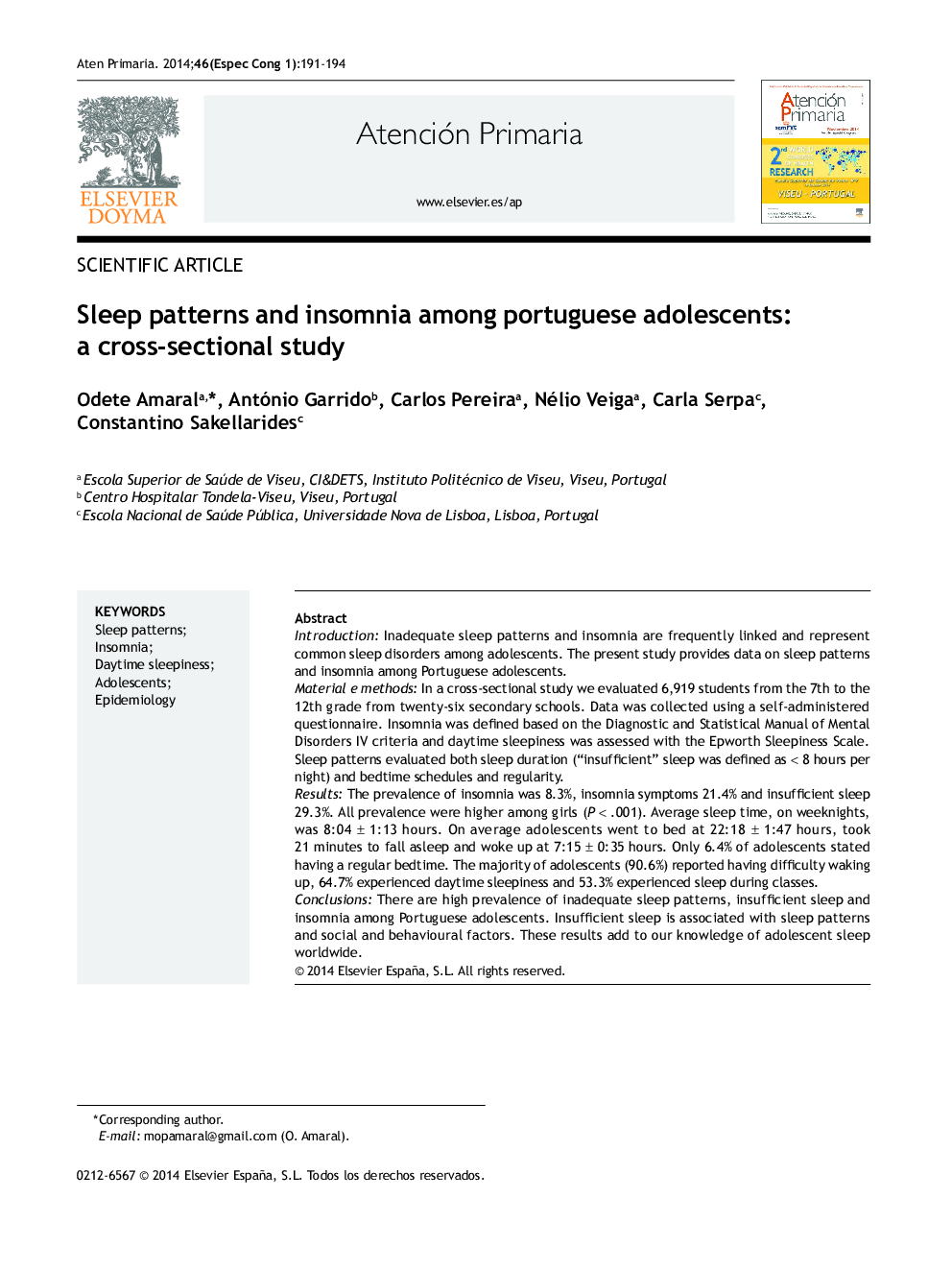| کد مقاله | کد نشریه | سال انتشار | مقاله انگلیسی | نسخه تمام متن |
|---|---|---|---|---|
| 3457268 | 1230897 | 2014 | 4 صفحه PDF | دانلود رایگان |
IntroductionInadequate sleep patterns and insomnia are frequently linked and represent common sleep disorders among adolescents. The present study provides data on sleep patterns and insomnia among Portuguese adolescents.Material e methodsIn a cross-sectional study we evaluated 6,919 students from the 7th to the 12th grade from twenty-six secondary schools. Data was collected using a self-administered questionnaire. Insomnia was defined based on the Diagnostic and Statistical Manual of Mental Disorders IV criteria and daytime sleepiness was assessed with the Epworth Sleepiness Scale. Sleep patterns evaluated both sleep duration (“insufficient” sleep was defined as < 8 hours per night) and bedtime schedules and regularity.ResultsThe prevalence of insomnia was 8.3%, insomnia symptoms 21.4% and insufficient sleep 29.3%. All prevalence were higher among girls (P < .001). Average sleep time, on weeknights, was 8:04 ± 1:13 hours. On average adolescents went to bed at 22:18 ± 1:47 hours, took 21 minutes to fall asleep and woke up at 7:15 ± 0:35 hours. Only 6.4% of adolescents stated having a regular bedtime. The majority of adolescents (90.6%) reported having difficulty waking up, 64.7% experienced daytime sleepiness and 53.3% experienced sleep during classes.ConclusionsThere are high prevalence of inadequate sleep patterns, insufficient sleep and insomnia among Portuguese adolescents. Insufficient sleep is associated with sleep patterns and social and behavioural factors. These results add to our knowledge of adolescent sleep worldwide.
Journal: Atención Primaria - Volume 46, Supplement 5, November 2014, Pages 191-194
